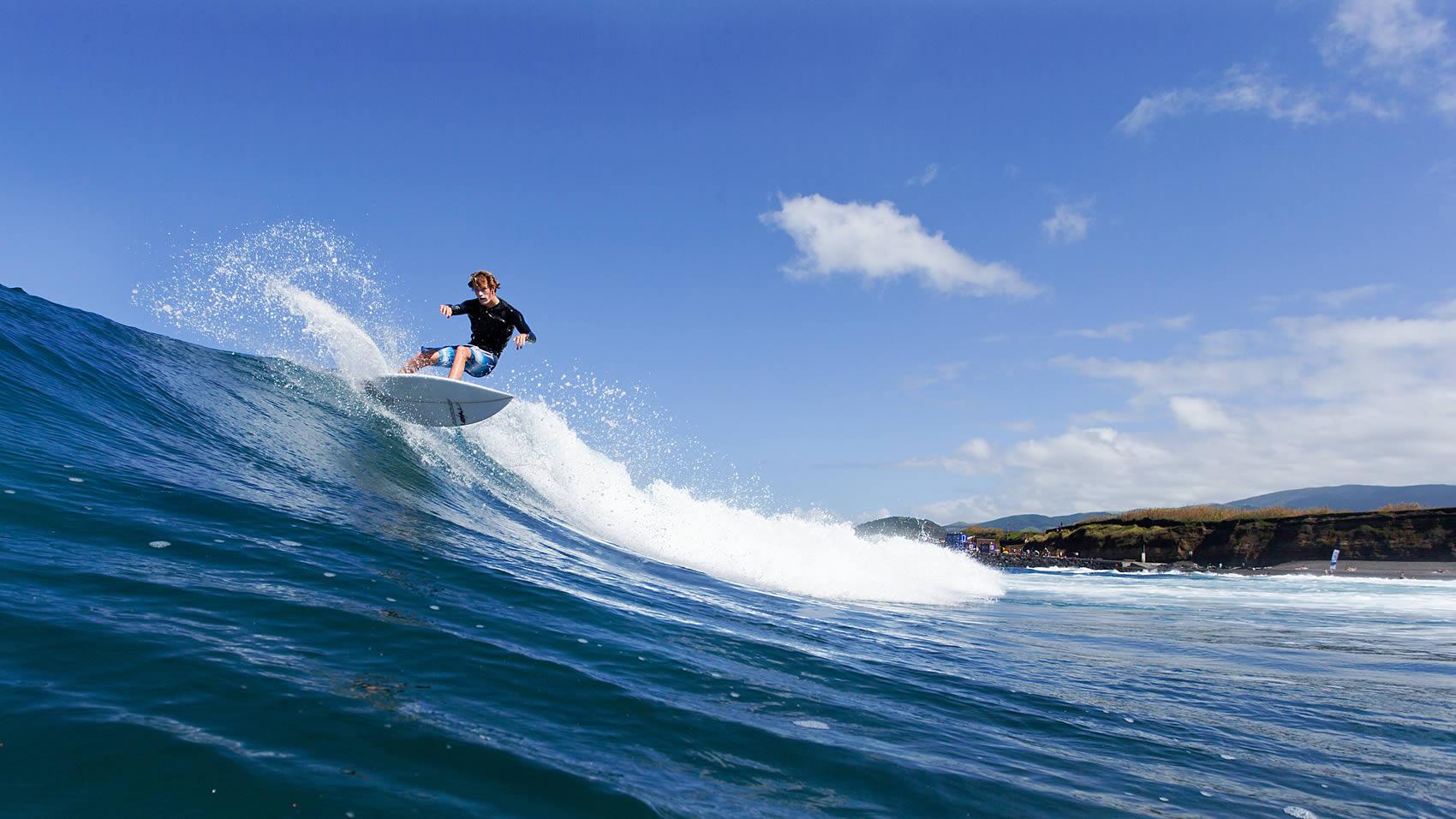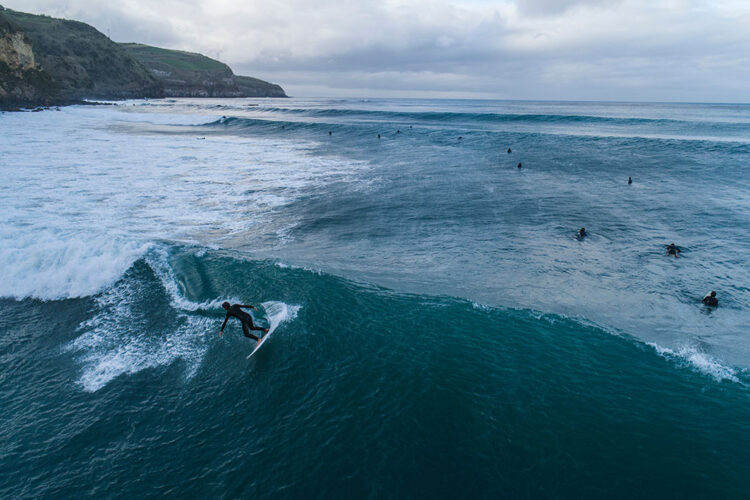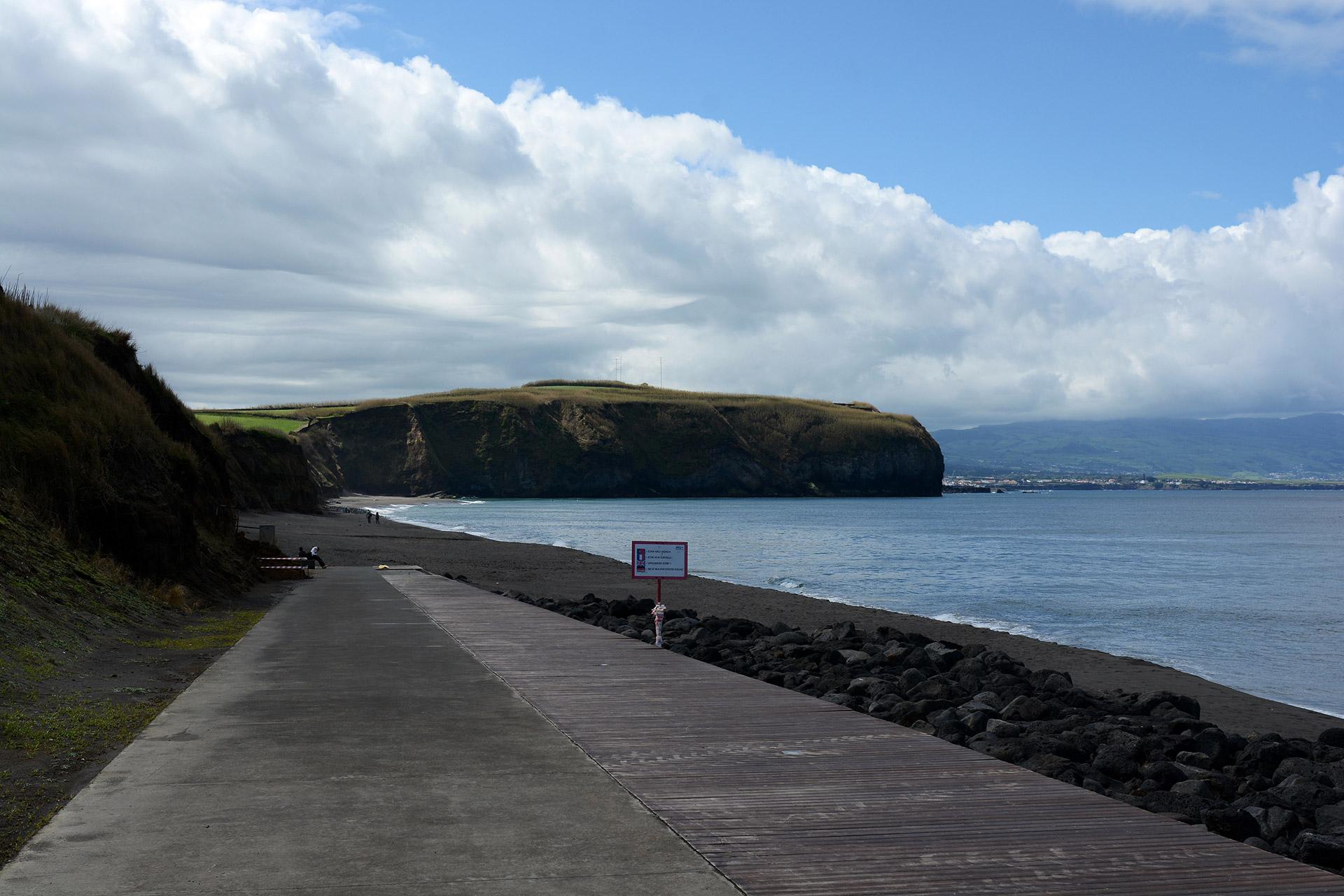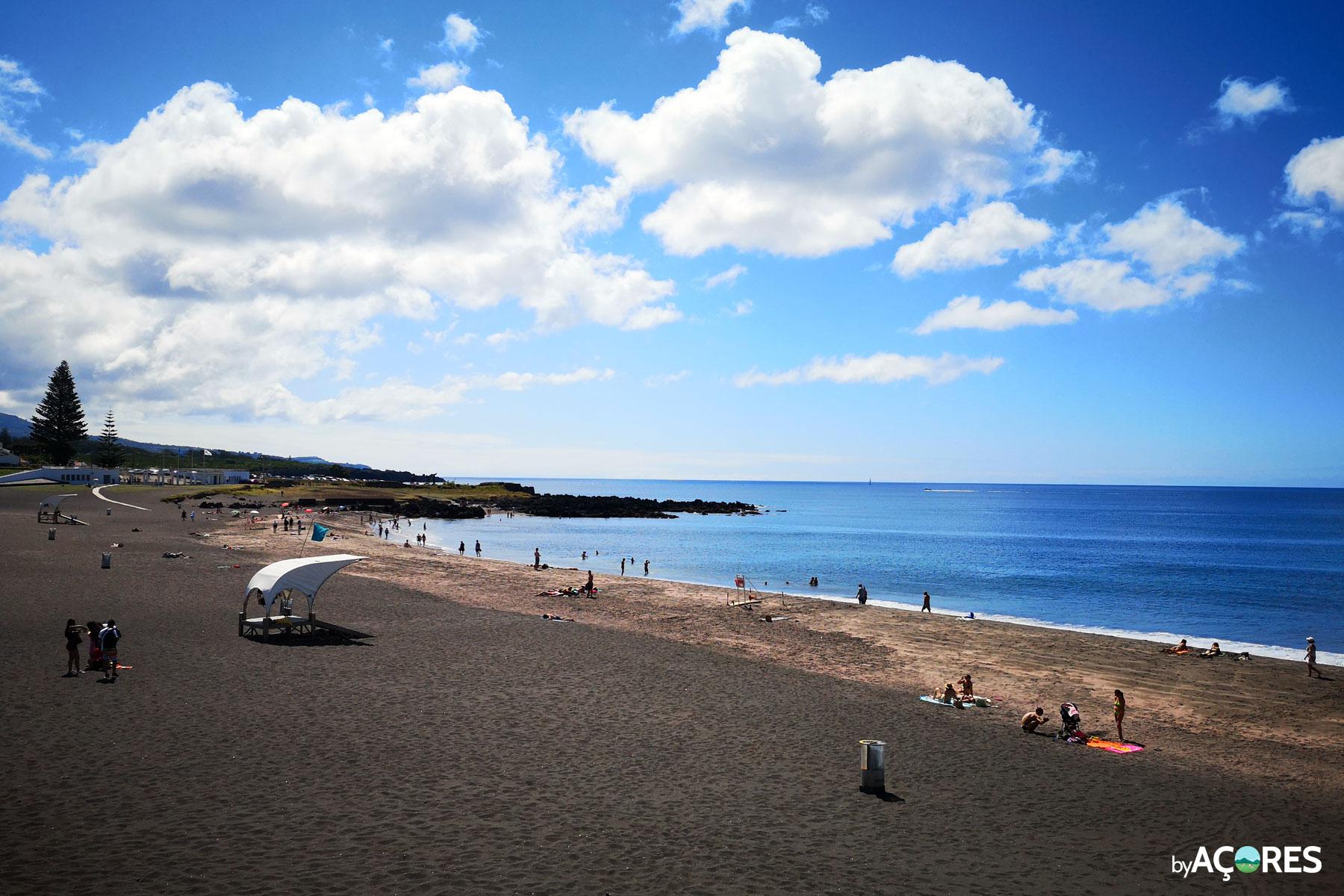Surfing in the Azores
Located in a privileged region of the Atlantic Ocean, the Azores archipelago consists of nine islands and is filled with natural beauty. Thanks to its geographical location, it is considered an excellent spot for wave sports, such as surfing.
Learn more below about Surfing in the Azores.

(C) Miguel Rezendes / VisitAzores
Índice de conteúdos [ocultar]
The Surf
This sport originated in Polynesia, a group of islands in the Pacific, using a board to glide over the ocean waves. In 1778, English navigator James Cook landed in the Hawaiian archipelago and introduced surfing to the area. It was subsequently spread to Europe, gaining followers across all continents.
In the 1950s, surfing became quite popular in the United States, especially in California, which turned the sport into a cultural attraction. Finally, from the 1970s and 1980s onwards, professional surfing championships began to emerge worldwide.
To start in this sport, it’s essential to choose the ideal type of board, as there are various sizes and shapes. For beginners, larger boards, also known as longboards, are recommended. It’s crucial to take surfing lessons before entering the water for the first time to gain basic information about movements, stretching, waves, tides, winds, etc.
Thousands of surfers visit the Azores every year, with a notable presence of mainland Portuguese and Spaniards. Besides enjoying the sport in one of the most fantastic places on the planet, they can also take in the natural beauty spread across the Azores. It’s worth it!
Surfing in the Azores

Surfing in the Azores
Surfing in the Azores stands out and differentiates itself from other places in the world by combining natural beauty with beautiful waves. In winter, strong swells are predominant due to the northern quadrant, caused by depressions and cold fronts passing north of the archipelago.
In summer, southern swells dominate due to tropical storms occurring in the southern region of the islands and the swells coming from the 11,000 km that separate the Azores from the depressions formed between South Africa and Antarctica. They are popularly known by the locals as “inchas” or “August tides.”
However, the climate in the Azores is quite unstable, with mild and temperate, as well as humid conditions. The different seasons do not greatly affect the appearance of the islands, which remain fresh and green year-round. There are days when you can feel all four seasons at once.
Best Time of Year for Surfing in the Azores
The best times to surf in the Azores are in autumn and spring, although the practice is feasible almost year-round. This is because, as mentioned earlier, winter conditions are unstable, with heavy waves occurring amid storms, and in summer, due to winds blowing from the north/northwest, the formed waves are not very consistent for the sport.
This wave formation is known as swells, produced mainly by storm winds that blow hundreds of kilometers out to sea, along with a combination of determining factors. Swells are highly sought after by surfers looking for a big, perfect wave.
The Best Spots for Surfing in the Azores
All the islands that make up the Azores archipelago have spots for surfing. However, São Miguel Island stands out for its potential and quality peaks, considered the most consistent surfing region in Portugal.
São Miguel Island
In São Miguel, surfing is guaranteed year-round, thanks to its greater exposure to swells. Annually, Ribeira Grande, located on the northern coast of the island, hosts one of the most important championships of the World Qualifying Series (WQS). This demonstrates the location’s strong characteristics for surfing, highly admired by competitors during the championship.
In 2018, Santa Bárbara Beach, in Ribeira Grande, was chosen to host the world surfing championship for the first time, the Azores Airlines World Masters Championships. Major surfers from the international scene participated in this event, such as Tom Curren, Sunny Garcia, Mark Occhilupo, Shaun Tomson, and the Portuguese João Alexandre “Dapin”.

(C) ribeiragrande.pt
The event positively contributes to highlighting the importance of the Azores in global surfing, as well as promoting the natural beauties found throughout the archipelago and influencing the strengthening of the local economy.
Milícias Beach, in Ponta Delgada, is the place where most locals surf, as it offers good conditions for practice, making it a great option for all types of surfers, from beginners to high-level professionals.

Also in São Miguel, Mosteiros Beach offers excellent waves, especially on the right swell, particularly benefiting regular footers, ensuring a lot of fun. Santa Iria is also noteworthy, although it cannot be accessed when the tide is high. It features beautiful left swells and, even though it isn’t as powerful, it provides good expectations for surfers.
See also: The Best Beaches on São Miguel Island
São Jorge
Another interesting surfing spot can be found on São Jorge Island, at Fajã do Santo Cristo, a highly sought-after location and a must-stop for surfers, with good waves and breathtaking scenery all around.
Remaining Islands
On Terceira Island, the parish of Porto Martins, in the municipality of Praia da Vitória, is a region that gathers various surfing enthusiasts.
As for the other islands, they all have surfing spots available at any time of the year, although they are not as popular as those listed above. You can check the complete list of spots here.
Map of the Best Spots and Wave Information
Therefore, if you are a surfing enthusiast, be sure to visit the Azores, surf its beautiful waves, and, of course, enjoy this fantastic place with its exuberant nature and charming attractions!
 Quick links and suggestions
Quick links and suggestions
Travel insurance with 15% discount for the Azores or another destination Click here to simulate >
Looking for trips to the Azores? See these promotions >
Rent a car in the Azores? The best rent-a-car >
Activities and Experiences during your stay? Check it out here >
See Whales and Dolphins? Book now online >
Have you had a canceled or delayed flight in the last 3 years? Receive your compensation here >


